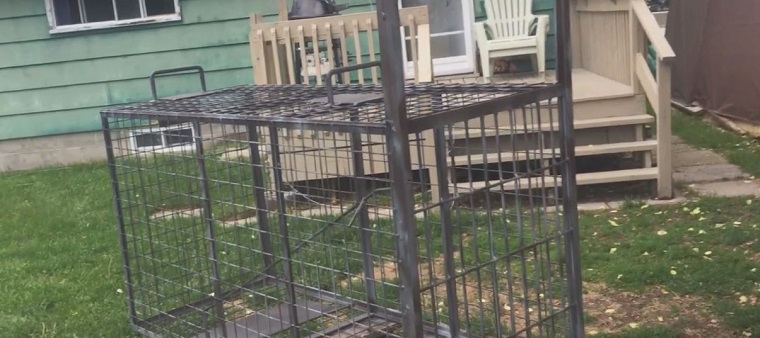-
info@aaanimalcontrol.com
Call us for help in your town
Humane Wildlife Education
Tips On Trapping Coyotes
Need coyote removal in your hometown? We service over 500 USA locations! Click here to hire us in your town and check prices - updated for year 2020.
All animals have their part to play in the ecosystem around them. That’s why removing just one animal, or one colony or group of animals, can have such a massive impact on the existing wildlife. The introduction of a species that isn’t meant to be there will prey on existing wildlife, potentially causing their numbers to decline. At the same time, remove an animal from a place it is meant to be and the other wildlife there is free to go nuts. Bats, for example, eat millions of mosquitos every night. Snakes eat rats and mice. Coyotes, raccoons, opossums and other scavengers eat the waste that’s left over. They’re technically nature’s little cleaner-uppers, eating the remains of animal carcasses that other predators have left behind, or even risking their own lives to eat the tasty roadkill in the middle of the road.

Coyotes, much like other scavengers, are important.
The reason we’re telling you this is because trapping a coyote isn’t necessarily the right way to go if you have a problematic little beast harassing your land. If you have noticed one hanging around, or seen evidence of one, an expert opinion should be your next port of call. There are so many things that can go wrong with a seemingly simple trapping mission, and just one of those things is that you could accidentally injure the animal because you don’t really know what you’re doing.
In order to trap a coyote, you’ll need the right kind of trap. It will need to be a big trap, and the right kind of trap too. Many traps exist for the capture and culling of scavengers and nuisance wildlife, but it does depend on how humane you would like your approach to be. Live cage traps have a habit of not working well for homeowners. It takes a lot to persuade a shy animal, like the coyote, to get anywhere close to a live cage trap.
That leaves you with lethal traps, but before you think that this is a good idea, remember what we said to you before. Taking just one animal from the ecosystem is enough to disrupt it. You’ll also find that there are usually many coyotes within a pack, and only one or two of the coyotes will be doing the damage. What happens if you trap the wrong one? Just one that’s hanging around and NOT causing any damage or disruption? (It’s a slim chance, because most coyotes are disruptive scavengers.)
If you trap a coyote that is not responsible for the damage to your land or property, the damage will continue. You won’t have resolved the problem.
Whatever method you choose to take, and we still suggest that you hire a professional, make sure that you know the rules and regulations in your particular state. There are too many laws to mention when it comes to trapping, killing, or releasing nuisance wildlife, and they all differ from state to state too. Some animals are protected by federal law, others are protected by the state laws only. The information is relatively easy to find on the internet, or you could always give the local authorities a call to make sure you’re not doing anything you shouldn’t be.
When you set traps for nuisance wildlife, you will generally find that there will need to be a label somewhere that clearly states YOUR name and details. The traps must be set in places where they can’t pose threats to other life, human, animal, or otherwise, and they must also be checked very regularly — at least daily.
If you are trapping on property that could also be classed as someone else’s property, or there’s a chance that other people could be using the land, you must make sure you have the right permissions before you start lying any traps.
In terms of nuisance animal removal and control, trapping coyotes is not always your best option. You definitely shouldn’t attempt to trap this animal if you are not sure of the process, or how to do it safely and properly. Trapping and releasing very rarely works quite as humanely as you’d hope, with most released animals dying in the first couple of days. There are also other things that you will need to take into consideration, such as disease and parasites, and also physical injuries. Coyotes have strong jaws, sharp teeth, and nasty claws. They will do a staggering amount of damage, should a human-coyote interaction arise.
Do yourself a favor, if you aren’t sure, don’t DIY it. Call in the professionals instead. It’ll save you time, money, and effort in the long run. Just ask any other homeowner that has ever tried to do this job themselves too …
For more information, you may want to read How to get rid of coyotes or click on one of these guides that I wrote:
How To Guide: Who should I hire? - What questions to ask, to look for, who NOT to hire.
How To Guide: do it yourself! - Advice on saving money by doing wildlife removal yourself.
Guide: How much does wildlife removal cost? - Analysis of wildlife control prices.


















